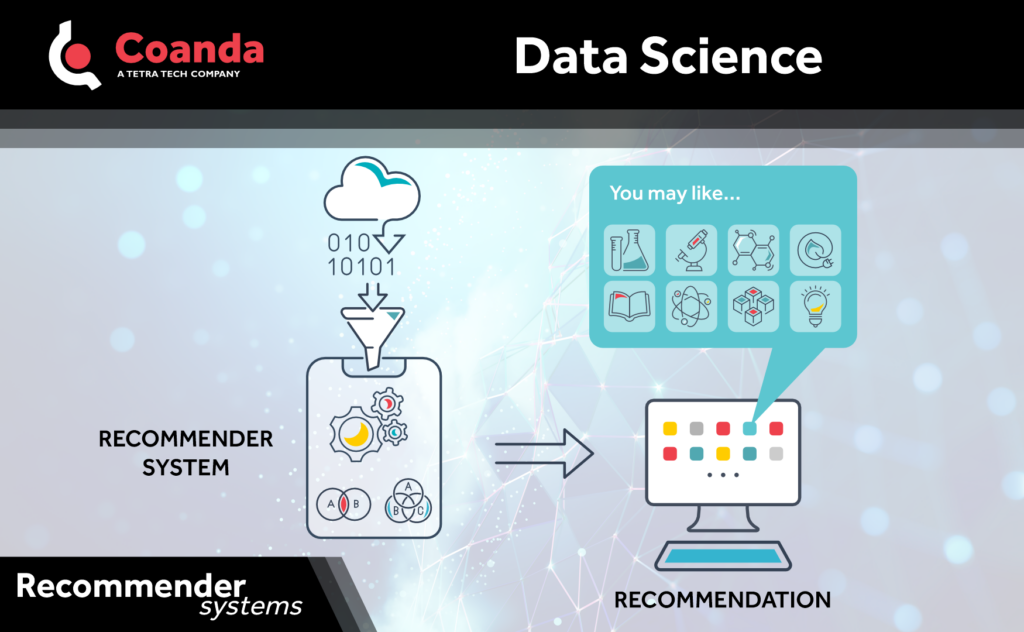Recommender System
Posted on February 27, 2024 Big Data Machine Learning & AI
A recommender system is an algorithm that is designed to provide personalized recommendations of items that are most relevant to a specific user, typically from a large list of possible items. A famous example is Netflix’s algorithm for recommending content to users, though recommender systems are now found everywhere, from online retail stores to music services to reading lists to travel planning to restaurant suggestions – the list goes on and on. As such a lot of work and research has gone into recommender systems.
There are three main types of recommender systems:
- Content-Based Filtering: This approach recommends items similar to those a user has liked or interacted with in the past. It analyzes the attributes or features of items and suggests items with similar characteristics.
- Collaborative Filtering: Collaborative filtering recommends items based on the preferences and behaviours of similar users. It identifies users with similar tastes and recommends items that those similar users have liked or interacted with, but the target user hasn’t.
- Hybrid Recommender Systems: These systems combine multiple recommendation techniques, such as content-based and collaborative filtering, to provide more accurate and diverse recommendations.
At a higher-level, recommender systems provide a way to create “matches” between two sets of objects. With this perspective, all the techniques, methods, and models used for recommender systems can be leveraged for a variety of applications in a range of industries.

For example, a recommender system could be used:
- in drug development to suggest new potential targets for which existing drugs could be adapted
- to recommend what parts should be replaced or what type of maintenance should be performed on certain equipment, based on performance and diagnostics data
- as part of a service or maintenance system to help schedule individuals with specific jobs
- to help determine which social programs are best suited for an individual’s needs.
In a future post, we’ll explore some of these examples in more detail.


